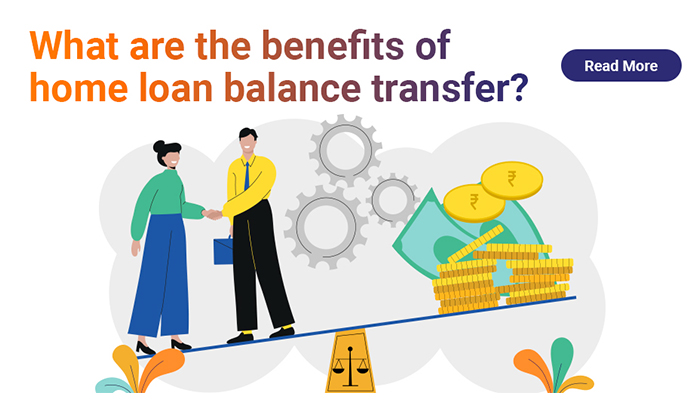10 Home Loan Terms You Should Know

Home loans have made buying your dream home a lot easier. Now you don have to wait for years to save enough money to be able to buy a house. With home loans, you can buy a house as early as you would want and then repay the amount lent, in the form of monthly installments.
Here, are the 10 home loan terms that you should know before opting for a home loan:
1. EMI: While taking a loan, this is the term you would hear the maximum time. EMI or better known as Equated Monthly Installments is the monthly amount you pay the bank in order to repay the loan. It is pre-calculated and is known to the borrower before taking the loan. EMI is calculated on the basis of the amount borrowed, the applicable rate of interest and the tenure of the loan.
2. Down Payment or Margin: While buying a property, the amount which the banks sanction as the loan is mostly 70-80% of the property value. The remaining has to be arranged by the borrower. Let say if you plan to buy a house worth Rs. 50 lac, and bank sanctions an amount of Rs 40 lac as home loan. The remaining 20%, which you need to arrange yourself is known as down payment or margin.
3. Resale: The term resale is used in the context of the houses which were previously owned by a party and are not directly bought from builders.
4. Credit Appraisal: Before sanctioning a loan, bank ensures the borrower repaying capacity by checking several parameters. These include checking income, age, savings, employer, assets and liabilities and other information in order avoid the possibility of default. The process of ensuring repayment capacity is called credit appraisal.
5. Pre-approved Property: Banks verify properties entitled for a home loan. Some builders get this sanity check done by banks to get their property promoted for sale. A pre-approved property does not mean a 100% safe property, and one has to check before making an investment.
6. Security/collateral: Sometimes the bank needs a collateral or a security which is an asset in order to ensure repayment ability. This asset shall be used to recover the amount in case of any default.
7. Post Dated Cheque PDCs: Post Dated Cheques are a series of cheques issued by the borrower for up to 1-2 years, which would be used to withdraw EMIs in the form ECS. These cheques bear a future date and could be cleared upon the mentioned date.
8. Sanction Letter: It states that the loan has been confirmed to be granted. Sanction letter confirms the applicant eligibility for availing the loan and other loan-related details such as loan amount, the rate of interest, tenure, EMIs etc. A bank has the right to cancel the loan even upon issuing the sanction letter of the loan pertaining to property-related or other issues
9. Disbursement Mode: Once the verification and legalities are completed by the bank, it agrees to disburse the loan amount. Loan disbursement could be done in 3 modes:
- Advance: When the entire loan amount is disbursed to the borrower by the bank before the completion of construction. It is known as Advance Disbursement.
- Partial: When the loan disburses a part of the loan amount prior to the completion of construction, and the remaining amount is disbursed upon completion of construction, it is known as Partial Disbursement.
- Full: When the entire loan amount is disbursed upon the completion of construction, it is known as Full Disbursement.
10. Pre-EMI: It is the amount you pay as the interest prior to the complete disbursement of the loan amount. To know the difference between EMI and Pre- EMI, click here.
Now that you are fimiliar with the above mentioned terms, you are a much informed individual to understand home loan processand thus can easliy look out for a good home loan partner to realize your dream home.
To apply or for any query on home loan, fill your details in the call back form given on this page!
Tags
Disclaimer: The information contained in this post is for general information purposes only. IIFL Home Finance Limited (including its associates and affiliates) ("the Company") assumes no liability or responsibility for any errors or omissions in the contents of this post and under no circumstances shall the Company be liable for any damage, loss, injury or disappointment, etc. suffered by any reader. All information in this post is provided "as is", with no guarantee of completeness, accuracy, timeliness, or of the results, etc. obtained from the use of this information, and without warranty of any kind, express or implied, including, but not limited to warranties of performance, merchantability, and fitness for a particular purpose. Given the changing nature of laws, rules, and regulations, there may be delays, omissions, or inaccuracies in the information contained in this post. The information on this post is provided with the understanding that the Company is not herein engaged in rendering legal, accounting, tax, or other professional advice and services. As such, it should not be used as a substitute for consultation with professional accounting, tax, legal or other competent advisers. This post may contain views and opinions which are those of the authors and do not necessarily reflect the official policy or position of any other agency or organization. This post may also contain links to external websites that are not provided or maintained by or in any way affiliated with the Company and the Company does not guarantee the accuracy, relevance, timeliness, or completeness of any information on these external websites. Any/ all (Home/ Loan Against Property/ Secured Business Loan/ Balance Transfer/ Home Improvement Loan/ NRI Home Loan/ Home Loan for Uniformed Services) loan product specifications and information that may be stated in this post are subject to change from time to time, readers are advised to reach out to the Company for current specifications of the said (Home/ Loan Against Property/ Secured Business Loan/ Balance Transfer/ Home Improvement Loan/ NRI Home Loan/ Home Loan for Uniformed Services) loan.
 Login
Login




















